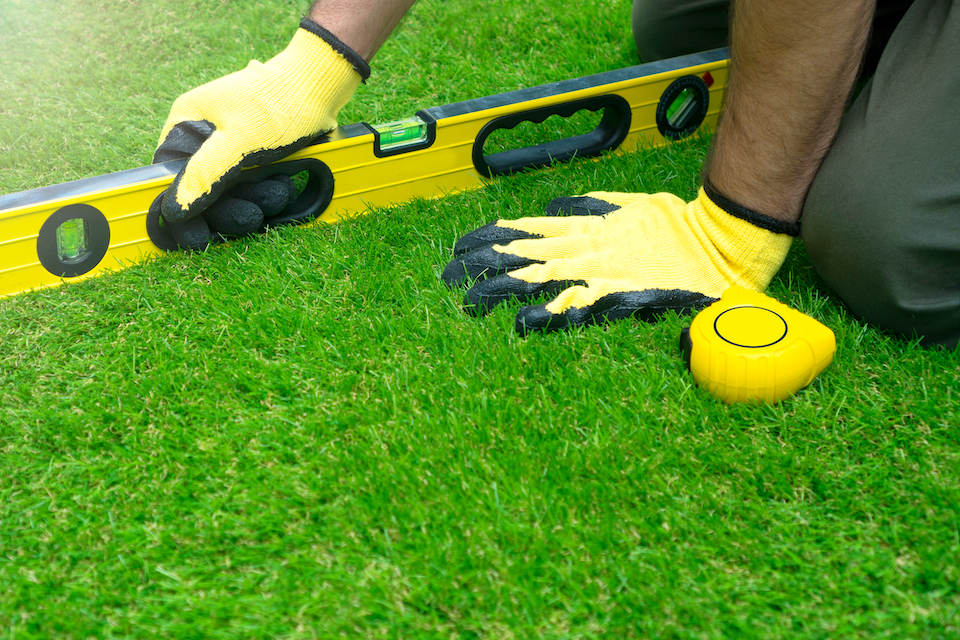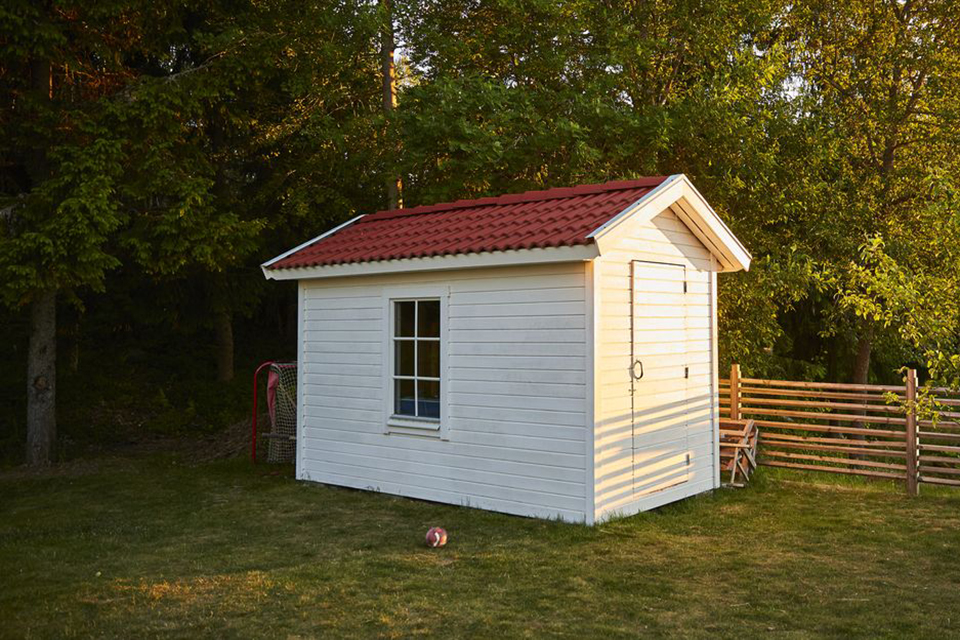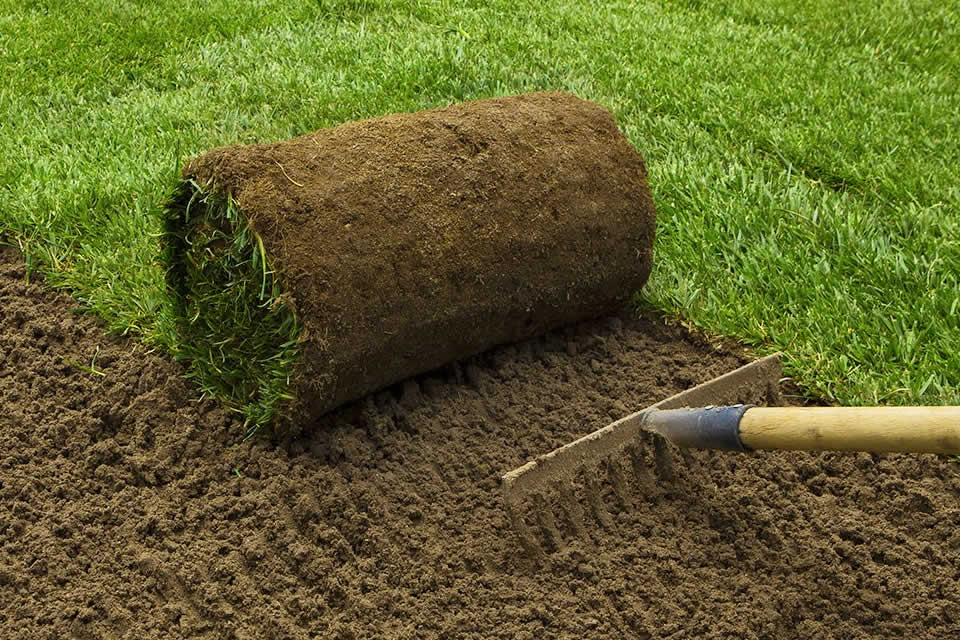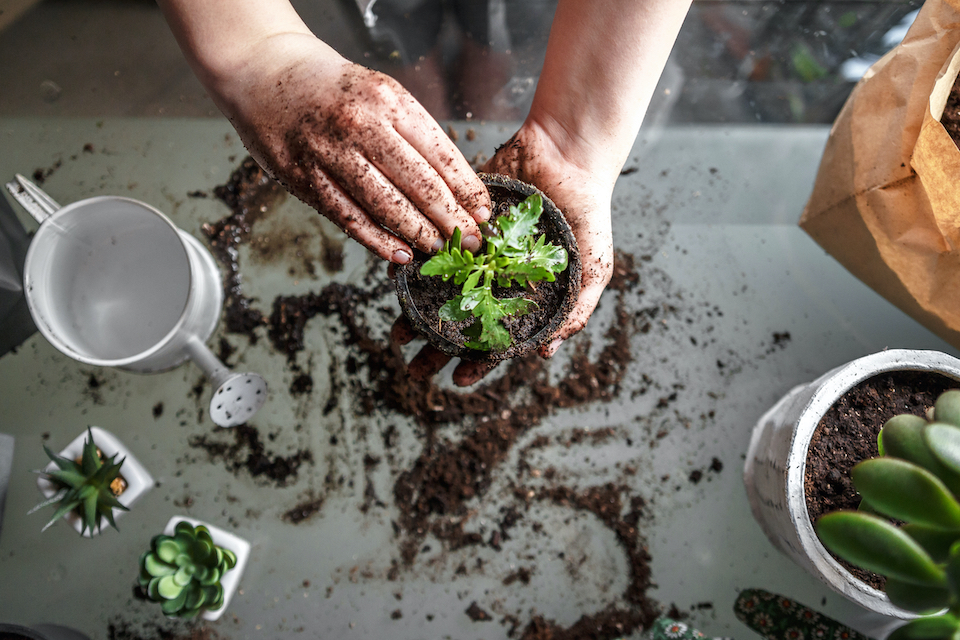How Much Does it Cost to Level a Garden?
Levelling your garden to make it a flatter, more uniform space is one such garden improvement to consider. Levelling may appear simple in theory, but it is a time-consuming task in practice.
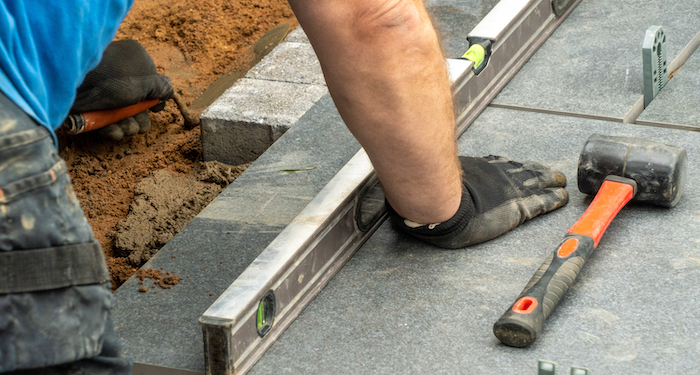
Here we will go through the various costs to level a garden and what it includes.
There are numerous benefits to levelling a sloping garden, one of which is that it can provide significantly more usable space.
The average cost of levelling a garden depends on several factors, and there is no one-size-fits-all solution, but it is typically in the hundreds of pounds range.
Calculating the gradient, percentage, or fall for your garden is extremely useful for calculating costs. Although not all slopes are naturally consistent, identifying an average fall will help you with your calculations.
Typically, levelling a garden entails raising the lower sections because it is easier to fill into it than excavate out. To calculate the gradient of your garden, draw a straight line from the highest point to the lowest point.
This is best accomplished with a laser level and a series of timber stakes. Stakes can be pushed securely into the ground, and a horizontal line can be drawn where the laser makes contact. This can also be accomplished using a string line, spirit level, and pegs.
You can use a measuring tape to record the average depth that will need to be filled. This can be multiplied by the total area to get the cubic metre fill.
You can expect to pay between £1,000 and £2,000 for levelling an average-sized garden that is flatter and not too uneven.
If you have a steep garden, it will require a lot of digging work and will cost up to £5,000 - £7,000 to level it out, or if you want it to be two layers to two tiers, you can expect to pay £10,000 for the digging and retaining wall.
If your garden has a few uneven spots here and there, all you need to do to level it is removed higher spots and fill lower spots. Because this does not require a lot of work and effort, the cost level would be much lower.
If your garden has a lot of ridges, you may have to start from scratch, such as calculating how much soil to dig, digging up those hills, adding or removing soil, and then planning for turf or a patio or whatever you want.
It will take much more effort and thus time to level it properly than it would in a less uneven area. This will end up costing more in the long run. There is also the cost of disposing of the waste soil.
A day's labour for one man will cost around £100 - £200, and it does not have to be a job for an expert, but there are some pitfalls to avoid before you consider saving money by doing it yourself and ignoring professional advice.
It is critical to finish with a level area, or you will cause new problems than you solve. A retaining wall will also be required to withstand the build-up of soil pressure.
Terraced designs that are complex and ornate and are a solution for long steep slopes can cost several thousands of pounds and will necessitate the services of a garden designer.
Garden Levelling Prices
The table below will show the average garden levelling prices:
| Job | Cost |
|---|---|
| Levelling an average-sized garden | £1,000 - £2,000 |
| Levelling a sloping garden | £5,000 - £7,000 |
| Two layers to two tiers | £10,000 |
What are the Supply Costs for Levelling a Garden?
Labour costs can become quite overwhelming sometimes, which is why most of us like doing DIY. Levelling a garden is a difficult task; however, if you want to save some money and do the job yourself, then here, we will go over the supply costs you will need to level your garden.
Topdressing is the solution for any depressions in the lawn that are 2 to 3cm deep. Purchase a top-dressing mixture or make your own by combining two parts sand, two parts topsoil (which costs £50 - £70 in bulk) and one part compost (which costs £40 - £90).
Fill in the depressions evenly and compact the soil with your feet or a rake (£5 - £15) before watering. Allow for two days before adding grass seed and a light layer of topsoil—water as needed.
If there are deeper slopes, dig down to about 4 to 5cm and remove any stones or lumps of soil. Compact the soil, then use the above-mentioned top dressing and grass seed for £2 - £15 to fill in the bald spot.
To remove lumps, carefully lift the turf and then remove the soil beneath until the region is level with the lawn. Reinstall the turf and compact it afterwards.
If you're adding a patio or laying decking in your garden, you can also level an area by hand. You must dig out the space needed to size and level it at the start of your project before proceeding as needed depending on whether you're laying decking or paving slabs.
Decking will cost between £10 and £15 per m2, while paving slabs will cost between £3 and £13 per slab.
The most popular piece of equipment is a mini digger, which runs on caterpillar tyres to prevent having stuck in the mud. These can scrape and cart soil much faster than you could by hand.
Mini diggers can be small and are intended to function in tight spaces; you just need to make sure there is access for them if you are working in the back of the house; they can be expensive, costing £1,000 or more.
The table below will break down the material costs to level a garden.
| Supply | Cost |
|---|---|
| Topsoil | £50 - £80 |
| One part compost | £40 - £90 |
| Rake | £5 - £15 |
| Grass seed | £2 - £15 |
| Decking | £10 - £15 per m2 |
| Paving slabs | £3 - £13 |
What are the Additional Costs of Levelling a Garden?
The cost of levelling a garden is affected by a variety of factors. While putting a price on each of these factors is difficult because they vary from case to case, it is best to understand each factor to avoid surprises when hiring a garden designer.
Here we will go through the various additional costs that you may need to budget for.
Landscaping Cost
Turfing costs approximately £150 to £850, decking costs approximately £1000 to £9000, and fencing costs approximately £500 to £1000.
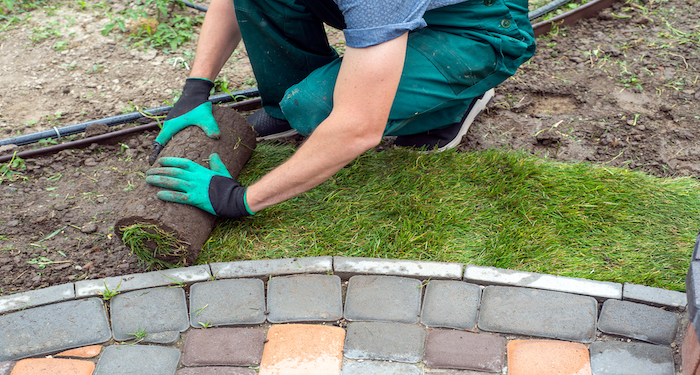
Other landscaping jobs involve installing a patio, which typically costs between £800 and £1000, and pond installation, which typically costs between £500 and £5000.
Landscapers are also skilled at building garden walls, which cost between £920 and £1900, as well as sheds, which cost between £700 and £1000.
They also specialise in gardening tasks such as tree and hedge trimming, which costs between £90 and £330.
Another high garden landscaping cost is the cost of tradesmen, with professional landscapers charging around £100 to £180 per day or £8 to £15 per hour for smaller jobs.
Landscapers will charge different rates for different jobs; for example, the labour cost for turfing ranges between £30 and £40 per square metre.
For further information, please refer to our guide on landscaping and design costs.
Garden Waste Removal
The cost of having garden debris removed ranges between £70 and £200. The cost, on the other hand, will be determined primarily by the size of your garden and the amount of waste that needs to be removed.
Green waste removal is estimated to cost between £100 and £150. The same can be said for brown waste removal. The cost of collecting soil trash is approximately £0.15 per kg.
If you have a small amount of garden waste that needs to be disposed of on a regular basis, see if your local council provides a garden waste collection service. These are either free of charge or cost between £150 and £200 per year.
Some garden waste removal companies may charge based on the weight of the waste. If you have a greater trash disposal requirement or can consolidate services, you can reduce your costs per tonne.
As a result, when you employ a company to remove your trash, heavy items such as dirt and bricks will be charged by weight.
For further information, please refer to our guide on garden clearance and waste removal costs.
Cost of Building a Wall
The general cost of building a wall with conventional bricks is £480 to £1600, or £750 to £2900 for a 1m high and 8m long wall, and £1020 to £4200 for a 1m high x 12m long wall.
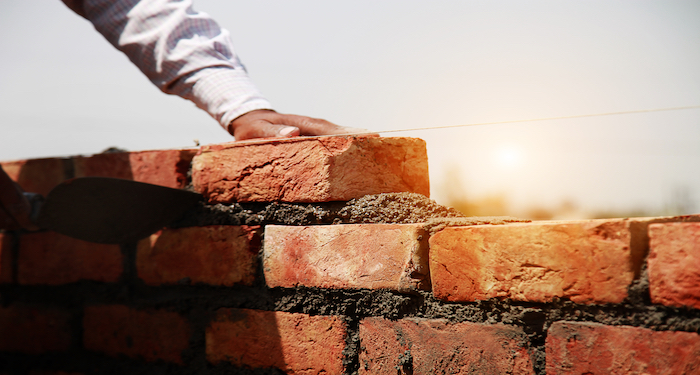
A garden wall made of natural stone would cost around £240 to £520 for a 1m high x 4metres long wall, £830 to £1540 for a 1m high x 8m long wall, and £1140 to £2160 for a 1m high x 12m long wall.
A 1m high x 4m long concrete wall would cost around £440 to £640, a 1m high x 8m long wall would cost around £670 to £980, and a 1m high x 12m long wall would cost around £900 to £1320.
If you want a flint wall, it will cost around £680 to £880 for a 1m high and 4m long wall, £1150 to £1460 for a 1m high to 8m long wall, and £1620 to £2040 for a 1m high x 12m long wall.
A facing brick wall would cost approximately £480 to £720 for a 1m high and 4m wall, £750 to £1140 for a wall 1m high and 8m long, and £1020 to £1560 for a 1m high and 12m long wall.
Finally, a slate wall would cost approximately £680 to £1000 for a 1m high and 12m long, £1150 to £1700 for a wall 1m high x 8m long, or £1620 to £2400 for a 1m high and 12m long wall.
For further information, please refer to our guide on garden wall costs.
Garden Size and Accessibility
In the UK, the squarer metres you have, the more expensive it is to level a sloping garden. A larger land area would, indeed, take longer to clean, fill, and prepare and would necessitate more manpower to complete.
In some cases, larger equipment such as bulldozers and excavators may be required, which will incur additional costs.
If you live in the countryside, this may add to the cost because transporting a large piece of equipment may be difficult.
Before the site visit, potential obstacles like gates, fences, or other issues that may influence the location's accessibility must be flagged with the contractor.
Terrain, Slope, and Soil
Each slope is distinct, and some are more difficult than others. Shallow slopes will take less time and materials to complete than steep slopes.
If trees, shrubs, rocks, as well as fences need to be washed, removed, or rearranged, the project becomes more complicated. Large trees and rocks may take some time to excavate and transport.
You may require the services of an earthmoving contractor, especially if elements must be moved. Of course, this would entail additional expenses.
Materials And Tools to Be Used
A garden levelling service involves the use of two materials. To begin, you'll need dirt and soil to fill the slope. Second, a retaining wall will be required to keep the dirt together and secure the land.

The materials used to fill the land, such as dirt and topsoil, can have an impact on the average cost. Because the goal is to grow a productive and abundant garden, having high-quality topsoil is critical.
Fill dirt, in addition to topsoil, is an important material for levelling your sloping garden. Although fill dirt is frequently inexpensive, the cost of transporting, digging, hauling, and removing it is not.
Aside from dirt and soil, a retaining wall and the materials used to construct it are important factors in calculating levelling garden costs in the UK. Concrete blocks are often more expensive than other materials, but they are more durable.
Breezeblocks are a much less expensive option, but they are more difficult to conceal. House bricks or natural stone are other options if you want a finish that matches the construction of your home.
When building a retaining wall, keep in mind that the structure must be strong enough to resist heavy rainfall and future wear and tear. Having to replace a concrete barrier may become more expensive than the initial costs, as well as inconvenient in the future.
Location
The cost of levelling and turfing a garden varies depending on where you live. For most lawn care services, London and the South-East frequently have higher rates than the North or West of the UK.
Of course, larger garden service companies would charge a higher price for their services when compared to local self-employed gardeners.
Tradesmen Costs for Levelling a Garden
Another important factor in determining garden costs is the cost of tradesmen, with professional garden levellers charging around £100 to £180 per day or £8 to £15 per hour for smaller jobs.
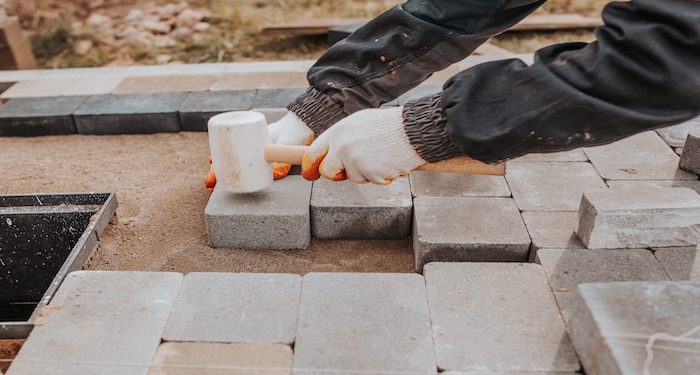
Gardeners will charge different rates for different jobs; for example, the labour cost for turfing ranges between £30 and £40 per square metre.
While decking installation costs between £20 and £50 per square metre, professional fence installation costs between £20 and £40 per m2.
Most gardeners charge by the hour. Hourly rates for general cleaning can range from £15 - £20 per hour to £90 - £120 per hour for hedge cutting.
The area as well as the size of the firm you choose also influences labour rates. Large companies in the north of England, for example, charge around £30 - £40 per hour, whereas a medium-sized garden maintenance buisness can charge around £45 - £50 per hour.
Although it could be tempting to do it yourself to save money on the cost of levelling a sloping garden in the UK, hiring a professional will save you money in the long run.
This is because a professional would know the precise slope measurements as well as the thickness and requirements of the retaining wall to withstand years of changing weather conditions.
A professional would also have access to a garden levelling machine, bulldozers, bobcat machines, and excavators. A professional would be aware of the areas that need to be protected from soil erosion and would be able to quickly locate dirt fill and topsoil.
A professional might easily test the state of soil quality on your property to assist in the preparation of the necessary type conducive to plant growth.
A professional would be aware of the necessary permits and permissions for the project and would assist you in applying for and preparing for them.
Hiring a professional will help ensure that your project is well-executed and will last for years or decades to give you the best bang for your buck.
It will also save you the time and effort of digging up dirt, relocating land, borrowing heavy machinery, and obtaining various materials.
The table below will break down the labour costs of levelling a garden:
| Labour | Cost |
|---|---|
|
Levelling |
£100 - £180 per day |
|
Levelling |
£8 - £15 per hour |
| Turfing | £30 - £40 per m2 |
| Decking | £20 - £50 per m2 |
| Cleaning | £15 - £20 per hour |
| Hedge cutting | £90 - £120 |
| Companies | £30 - £40 per hour |
| Garden maintenance | £45 - £50 per hour |
How Long Does It Take to Level a Garden?
An uneven lawn with lumps or bumps isn't ideal for your garden, but it's usually possible to work around it by levelling a garden lawn.
Slopes, on the other hand, can obstruct a variety of garden-related activities. The main reason for levelling a sloped garden is to create a more workable space.
However, because a slope can cause flooding and soil erosion, levelling it out is useful for more than just making your garden more pleasant to relax in. We'll go over how long it takes to level a garden in this section, so you know what to expect.
Ideally, you should begin your improvement projects in the spring so that your grass seeds get enough time to grow. At this time of year, the soil should have enough moisture to settle. Water your lawn about a week before you level it to keep the soil from becoming too hard or dry.
However, be careful not to over-water the soil, as damp turf can be just as difficult to work with as dry soil. Dampen the soil again a day before you start digging to ensure you have good digging conditions.
While it is possible to level a sloping garden without professional assistance, keep in mind that this is a large task! Before you start digging, make sure you understand what you're getting into.
The most important aspect is to get the retaining wall right. If you are unsure about the scope of the job, it is best to consult with contractors about your options.
In the long run, the initial cost could save time, hassle, and even money. Unfortunately, there is no simple answer to how long it will take to level a garden. The time required will be determined by a few factors, including:
- The dimensions of your garden - if your garden is small, levelling a large area will take less time and more time.
- How many people are assisting - if more people help you, the work will be completed in fewer days, and vice versa.
- The slope's steepness - what kind of levelling do you require? Do you prefer a raised or lowered garden? Levelling a raised garden will take longer than levelling a lower garden.
It should take 1 – 2 days to level a garden; however, the time it takes to grow back and for your garden to settle will depend on the area you live in and the size of your garden.
The table below will show the duration to level a garden.
| Levelling a Garden | Duration |
|---|---|
| Levelling | 1 – 2 days |
Types of Garden Levelling
Before you decide to level your sloping garden, it's a good idea to know that a slight downward slope in the garden is essential for good drainage. You should seriously consider whether you need to level off your garden.
If your slope is manageable, you should consider planting flower beds and vegetables. You never want exposed soil, so planting flowers and vegetables will keep your soil healthy and improve your drainage.
It will save you a lot of time and money while also making your garden more appealing and functional.
Depending on the severity of your slope, different methods are required for levelling a sloping garden. Here we will go through the different ways to level a garden as well as their pros and cons.
Make Low Terraces
Adding stair-like terraces to aid in the planting of your plants and vegetables, for example, is one method for levelling a sloping garden.
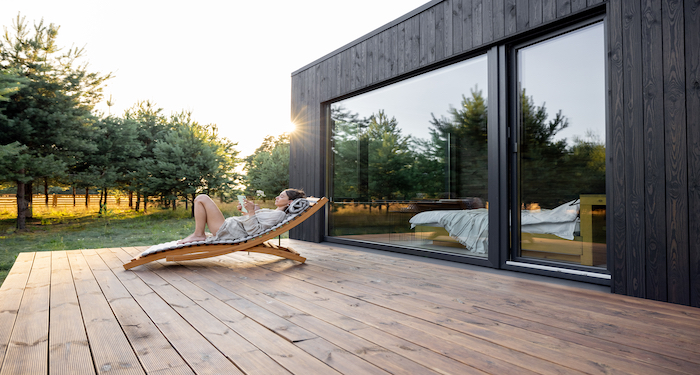
Terraces can also be used as a great recreational space, allowing you to show off your new and improved garden at all those summer barbecues!
Small jobs can be as simple as shifting the soil already in your garden, followed by adding braces to the area where the stairs will be built.
If you believe this is the case, there is no need to purchase fill dirt to aid in the structure of the stairs.
For larger jobs, you may want to consult with a landscaper to determine your best options. After that, you can add your preferred brick, stone, or wood all around the steps.
The sooner you begin planting, the better, as this will help prevent soil erosion.
Vegetables are an excellent choice for preventing erosion and improving drainage. When it comes to saving your soil with plants, however, you must exercise caution.
Only plants with deep roots or rhizomes, whose root systems interlock beneath the soil, can keep the terraces stable.
Pros
- Easy to do
- Affordable
Cons
- Not suitable for small gardens
Terracing Steep Slopes
Terracing steep sloping gardens necessitates a little more effort than simply moving soil around the garden.
Although terracing your garden is still an excellent way to correct a slope, it needs more attention and greater reinforcement.
It's critical to move quickly when levelling a steep slope to avoid damaging your house's foundation.
If you're tackling the slope by yourself, it's critical that you identify the source of the problem. It is also critical to select the correct and appropriate measures.
The following materials can be used to level a sloping garden:
- Stone retaining walls are constructed using pre-formed concrete blocks, breeze blocks, house bricks, or natural stone. All of them are very dependable for terracing and levelling.
- Reclaimed railway sleepers – if you're looking for a low-cost option, this is it. Because of the tar used to treat them, they are built to last. This is also their disadvantage, as they are extremely sticky to the touch or sit on. You could have them on the lower part of your structure as well as top them off with non-sticky blocks.
- New railway sleepers are being installed. They are more environmentally friendly but pricier than reclaimed railway sleepers. To keep them from rotting, they must be treated over time.
- Cages made of gabion – They are reasonably priced, sturdy, well-knit, and are made of strong wire mesh. Gabions, which are filled with your choice of stone or rubble, are becoming increasingly popular for building retaining walls.
Pros
- Variety to choose from.
- Different colours.
Cons
- Expensive
The Retaining Wall
A retaining wall around the garden is an alternative to terracing. It's a great option if you don't have a lot of space or don't want to go through the lengthy terracing process.
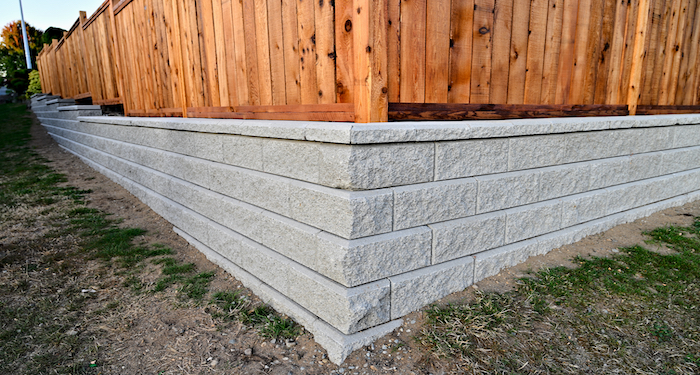
You'll need to get some fill dirt to fill the space between your garden's natural level and your new retaining wall. It is recommended that your retaining wall be no taller than 2 feet. This is since they are subjected to a great deal of pressure from the weight of the soil and rainwater.
If you want to make it a little taller, just make sure your retaining wall is slightly leaning back into the soil for support. You must also use strong materials to construct your wall.
The materials listed above are ideal because they ensure strength and dependability.
Pros
- Good for smaller gardens
- Easy to do
Cons
- Must use study materials
FAQs
Q: How do you level a garden without a digger?
- Plan -Depending on the purpose, you will need to mark the location of work. Before you can level the lawn, determine whether it needs to be raised or lowered. In most cases, both are required
- Soften the Ground -Depending on how thick the grass is, you may need to cut it. It is critical that you water the entire area if you are going to do this. It will be easier to dig because of this
- Grass Removal - A flat shovel is required to remove the grass. You should not dig too deeply, but just enough to get rid of the roots and grass. The shovel should be inserted three to six centimetres into the soil. The shovel should be able to slide beneath the grass and lift the soil beneath it
- Level the Ground - Once the grass has been removed, you can begin levelling the garden without the use of a digger. Filling in low-lying areas is preferable to bringing down higher hills. This method may well not work if their heights differ significantly
Q: Is planning permission needed to level a garden?
A: Any increase in garden level greater than 300mm necessitates planning. So, yes, he will need to plan of time. I would suggest that to build a retaining structure, you should also consider building codes. Drainage will undoubtedly be an issue for you.
Q: Can you level a garden DIY?
A: The main reason people seek to level a sloping garden is to create a more workable space. However, because a slope can cause flooding and soil erosion, levelling that out is useful for more than just making your garden more pleasant to relax in.
Q: Is it easy to level a garden?
A: To remove lumps, carefully lift the turf and then remove the soil beneath until the slope is level with the rest of the garden. Reinstall the turf and compact it afterwards. If you're adding a patio or laying decking in your garden, you can also level an area by hand.
Q: Can sand be used to level a garden?
A: Topdressing is the application of a levelling mixture of topsoil, compost, and fine sand. Mulch and plant debris should not be present in the soil because they can suffocate the grass.
Play sand, which can be purchased at any home centre, is the best sand to use. A typical mixture consists of 40% sand, 40% topsoil, and 20% compost.
Sources
- https://www.buckinghamshirelandscapegardeners.com/news/how-much-does-levelling-a-garden-cost
- https://thinkupgarden.com/how-much-does-it-cost-to-level-a-garden-in-the-uk/
- https://www.realhomes.com/advice/how-to-level-a-garden
- https://www.rightmove.co.uk/home-improvements/gardens/how-to-level-a-garden-and-other-landscaping-tips/
- https://horticulture.co.uk/how-to-level-a-sloping-garden/
- https://www.stewart-timber.co.uk/how-to-level-a-garden/

